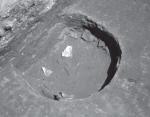Summary (English)
SEXAGINTA PRISTA (Varbin Varbanov – ramonearhaeology@abv.bg, Deyan Dragoev) Trenches І’1 and І’1’ were explored. The finds included Thracian, Roman, Late Antique and Mediaeval (10th – 11th centuries) sherds and 62 coins: one of the 1st century AD, three of the 2nd century AD, 18 of the 3rd century AD, 33 of the 4th – 5th centuries AD, one of the 11th century, three of the 16th – 17th centuries and three of the 20th century. Seventeen coins belonged to a hoard dated to AD 330/335 – 408/423. Eleven Thracian ritual pits (Nos. 83 – 91) were explored, 1.40 – 2.40 m in depth and 0.60 – 1.50 m in diameter. They contained fragmentary clay plaster, sherds from Thracian dolia and hand- and wheelmade pottery, and a fragment from a bronze pin. Pit No. 89, 4.20 m in diameter, contained a terracotta anthropomorphic cult figurine. An animal skeleton was discovered in pit No. 85. Pit No. 91 contained 220 flint artifacts. The pits dated to the 2nd century BC – 1st century AD. Two walls constructed of stones bonded with clay and five pits of the 2nd – 3rd centuries AD were discovered. The first wall, 64 – 68 cm wide, partly destroyed the southwestern wall of the temple of Apollo. The wall incorporated an antonianus of Philip I, which was the terminus post quem for its construction. The wall was destroyed by the walls of the Principia of the castellum Sexaginta Prista, which indicated that it was used until the beginning of the 4th century AD at the latest. A dug out was explored, containing building ceramics and pottery of the 2nd – first half of the 3rd century AD and a skeleton of a child, laid in a Hocker position and oriented north – south with head to the south. Pit No. 1 contained six fragments from small marble votive reliefs, bones, iron and bronze fragments, building ceramics and pottery. Pit No. 2 contained two coins of the 1st and the 2nd century AD and pit No. 3 contained an antonianus of Probus.
- Varbin Varbanov - Regional Museum of History – Ruse
- Deyan Dragoev - Regional Museum of History – Ruse
Director
Team
Research Body
- Regional Museum of History – Ruse






![Download [PDF]](/excavation/skins/fasti/images/results/download_sml.png)